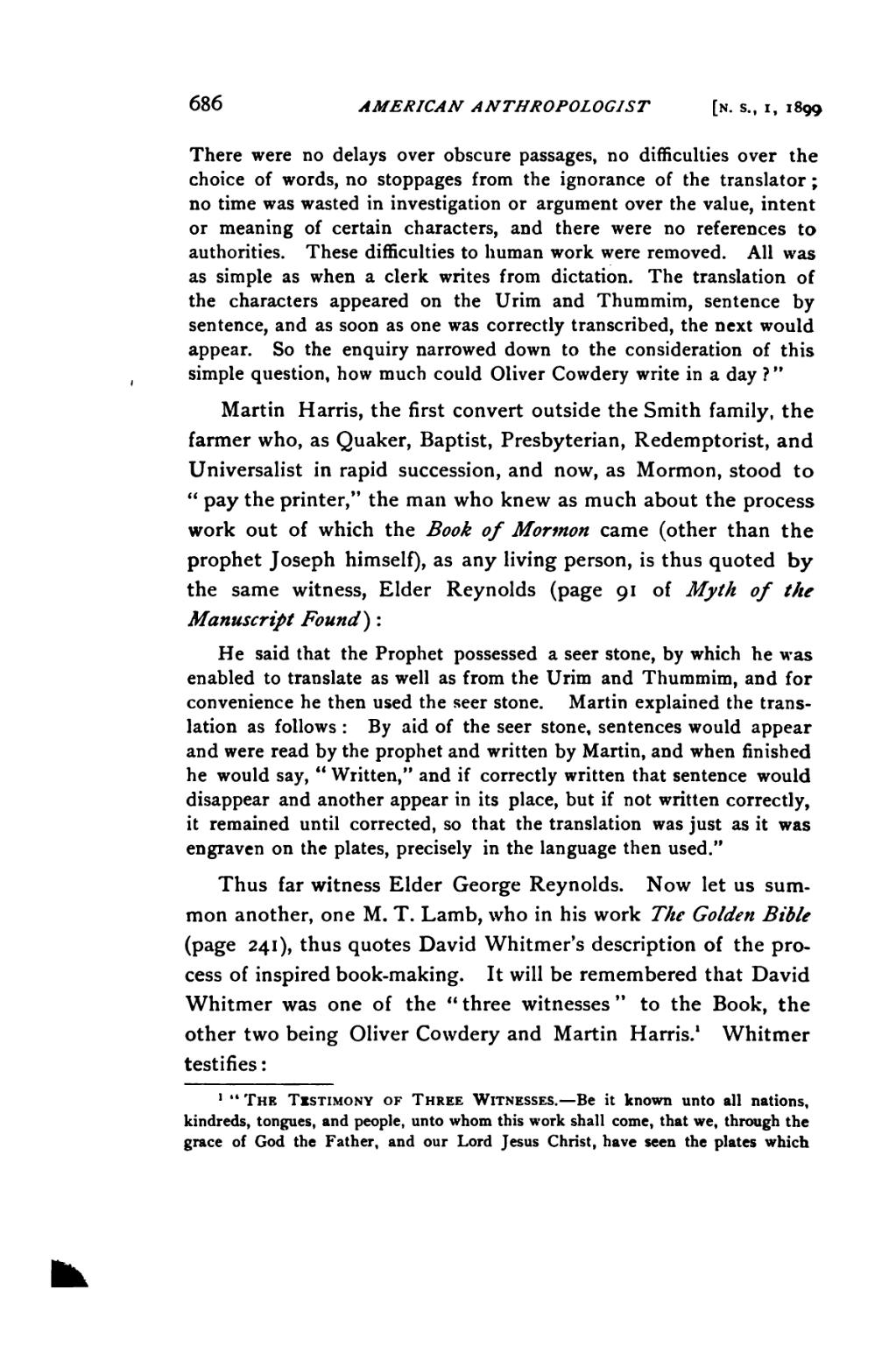686 AMERICAN ANTHROPOLOGIST [n. s., i, 1899
There were no delays over obscure passages, no difficulties over the choice of words, no stoppages from the ignorance of the translator ; no time was wasted in investigation or argument over the value, intent or meaning of certain characters, and there were no references to authorities. These difficulties to human work were removed. All was as simple as when a clerk writes from dictation. The translation of the characters appeared on the Urim and Thummim, sentence by sentence, and as soon as one was correctly transcribed, the next would appear. So the enquiry narrowed down to the consideration of this simple question, how much could Oliver Cowdery write in a day ? "
Martin Harris, the first convert outside the Smith family, the farmer who, as Quaker, Baptist, Presbyterian, Redemptorist, and Universalist in rapid succession, and now, as Mormon, stood to " pay the printer," the man who knew as much about the process work out of which the Book of Mormon came (other than the prophet Joseph himself), as any living person, is thus quoted by the same witness, Elder Reynolds (page 91 of Myth of the Manuscript Found) :
He said that the Prophet possessed a seer stone, by which he was enabled to translate as well as from the Urim and Thummim, and for convenience he then used the seer stone. Martin explained the trans- lation as follows : By aid of the seer stone, sentences would appear and were read by the prophet and written by Martin, and when finished he would say, " Written," and if correctly written that sentence would disappear and another appear in its place, but if not written correctly, it remained until corrected, so that the translation was just as it was engraven on the plates, precisely in the language then used."
Thus far witness Elder George Reynolds. Now let us sum- mon another, one M. T. Lamb, who in his work The Golden Bible (page 241), thus quotes David Whitmer's description of the pro- cess of inspired book-making. It will be remembered that David Whitmer was one of the " three witnesses " to the Book, the other two being Oliver Cowdery and Martin Harris. 1 Whitmer testifies :
��1 "The Tistimony of Three Witnesses.— Be it known unto all nations, kindreds, tongues, and people, unto whom this work shall come, that we, through the grace of God the Father, and our Lord Jesus Christ, have seen the plates which
��� �
